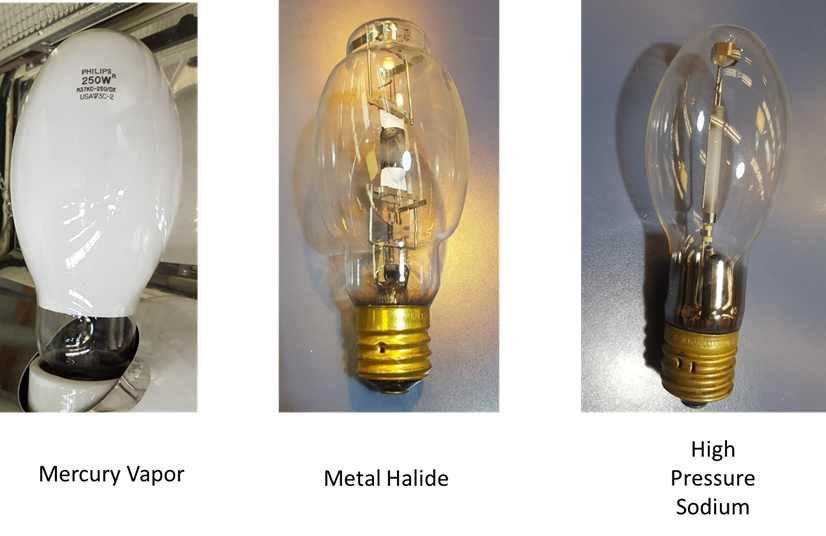High Intensity Discharge (HID) Lamps
Following the creation of the LPS and Fluorescent lamps, lighting engineers developed a series of gas discharge lamps which utilized a much more intense and bright arc using a much shorter arc tube. High Intensity Discharge (HID) lamps still rely on the principle of passing an electric current through a gas to create light, and they require a ballast to operate.
The shorter arc tube means that the lamps operate at a much higher pressure and temperature, hence the term “high intensity discharge”. Inside the short HID-arc tube, a highly concentrated and intense arc produces radiation with a wavelength within the visible light spectrum, depending upon the composition of the gases inside the lamp. These compact light sources produce high lumen outputs and are used extensively in industrial, commercial, sports, and street lighting applications.

There are three main types of HID lamps, starting with the mercury vapor lamp, which was followed by the development of the metal-halide, and finally the high-pressure sodium (HPS). All HID lamps require a ballast to operate.

